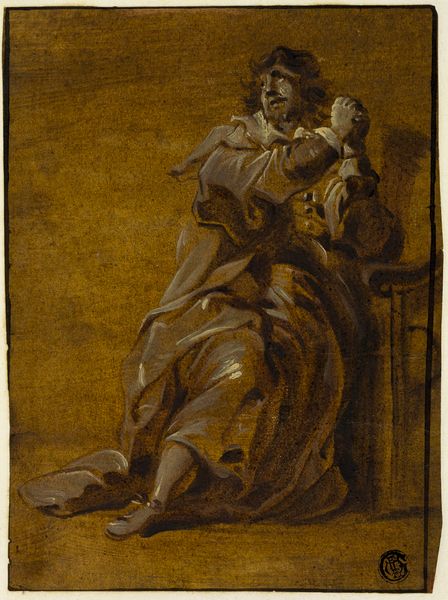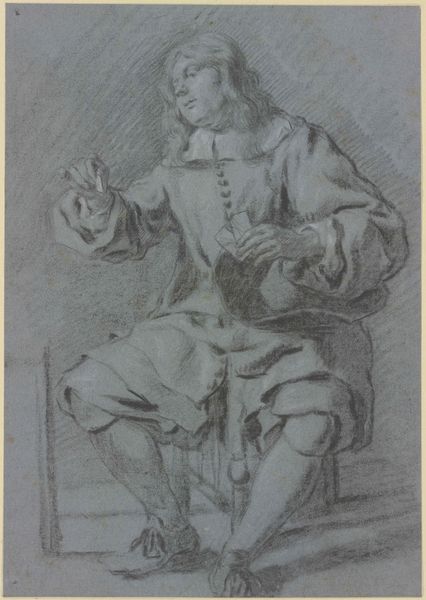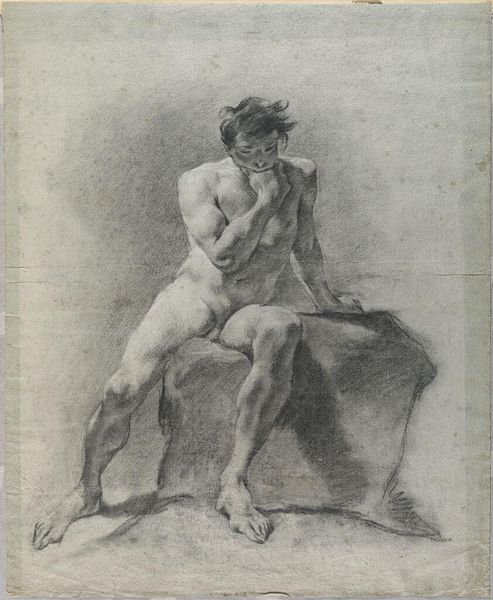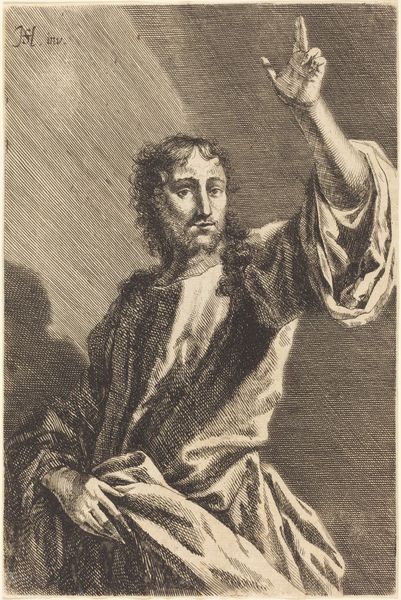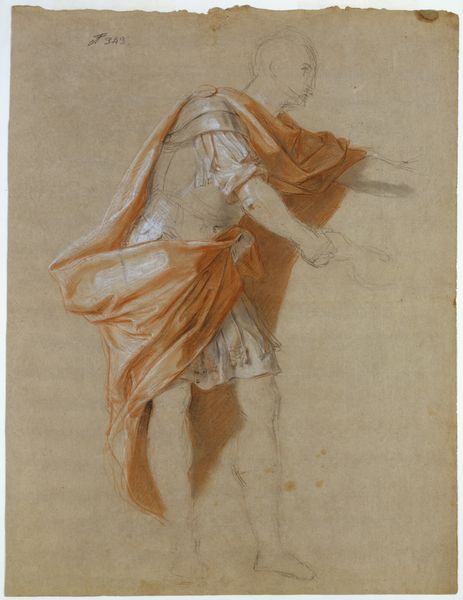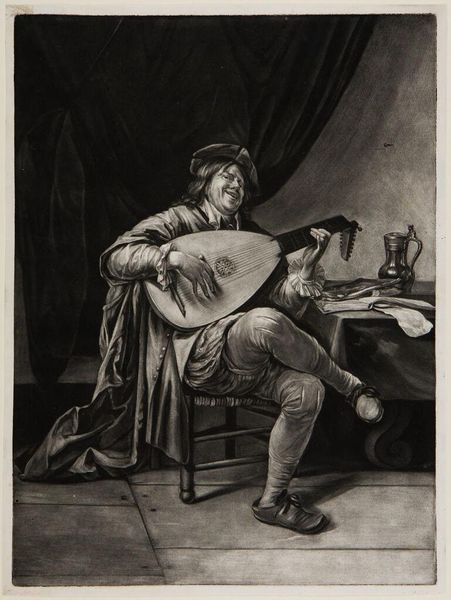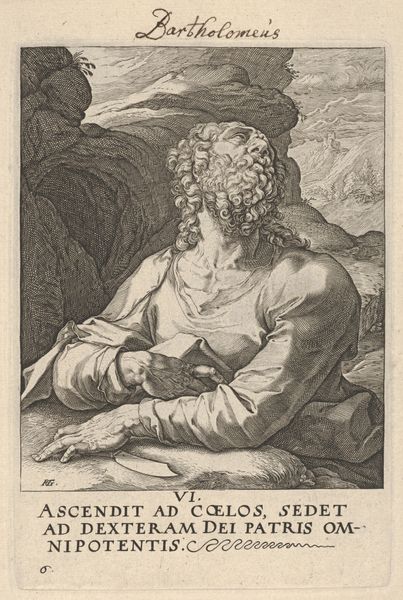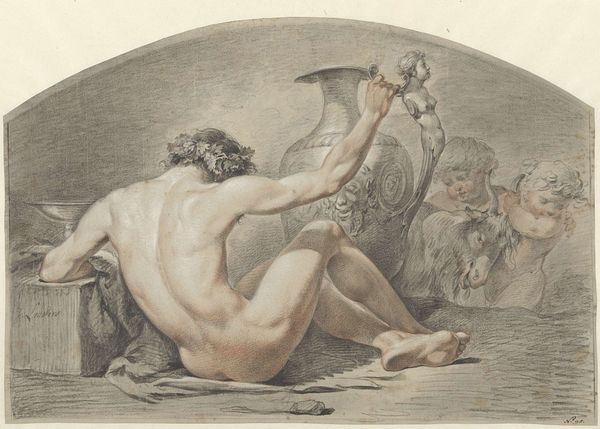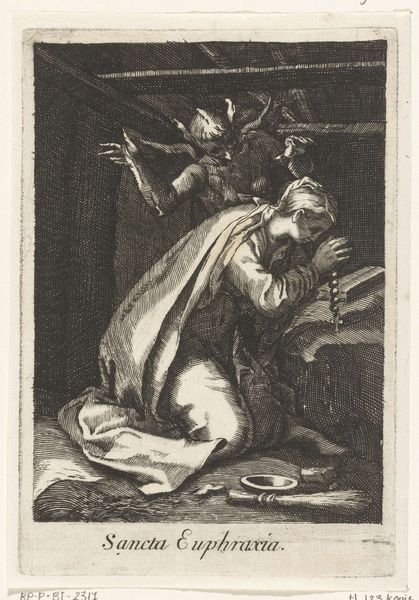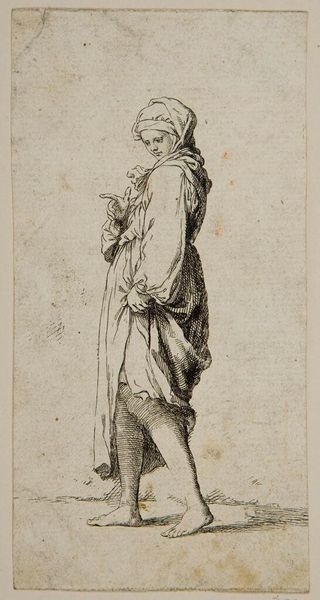
painting, oil-paint
#
venetian-painting
#
baroque
#
painting
#
oil-paint
#
chiaroscuro
#
history-painting
Copyright: Public Domain: Artvee
Curator: Ah, this image just sighs with weariness, doesn't it? It's positively swathed in melancholic shades of brown. Editor: You’ve zeroed in on something interesting. What we are looking at is "Saint Roch," an oil on canvas, attributed to Giovanni Battista Tiepolo and believed to have been painted sometime between 1730 and 1735. It’s Baroque, alright—heavy with dramatic lighting, known as chiaroscuro. Curator: Chiaroscuro? More like chiaroscuro-snooze-o! No, seriously, I'm feeling the weight of devotion in that dark corner he's huddled in. You can almost smell the damp earth. I see sacrifice etched onto his face. A subtle beacon of yellow lights it. It's less about grand gesture and more about quiet resilience. Editor: Exactly. Roch himself was a figure of considerable importance in the social and cultural life of the 18th century. As the patron saint of plague victims, his image served a very real and urgent public function. This wasn't art for art’s sake. This was public health messaging through art. Curator: So, less "aesthetic pleasure," more "don't-die-of-the-plague chic?" But still, even propaganda, if that’s what it was, could be gorgeous! The softness of that almost-gold fabric against the somber earth tones...I am captivated! There is pain in it but a defiant serenity too. He’s a symbol, sure, but Tiepolo has given him a soul. Editor: The interesting element of how artists depict subjects who played major social roles is precisely this push and pull between making them recognizable symbols and grounding them in human vulnerability. Museums provide unique settings to bring these sometimes seemingly distant figures into modern discourses. The play of light and shadow is central here, not just dramatically but politically. How suffering is rendered and who gets to see it, who funds its creation, for what purpose –these are crucial points. Curator: Oh, I could look at this one for hours and dream up tales about his travels and sorrows. Editor: Well, art is always a product of its time and reflects deep questions about our cultures. It certainly prompts worthwhile musings.
Comments
No comments
Be the first to comment and join the conversation on the ultimate creative platform.
